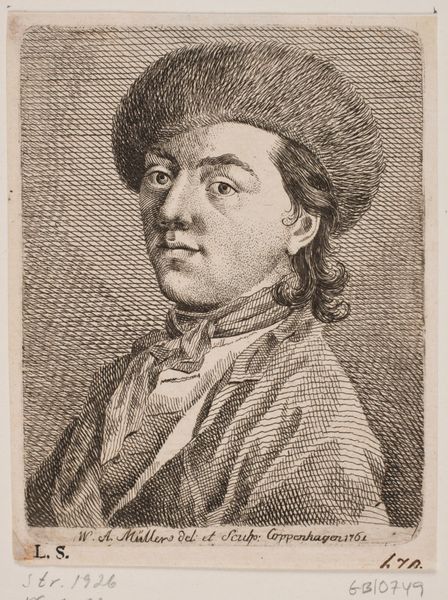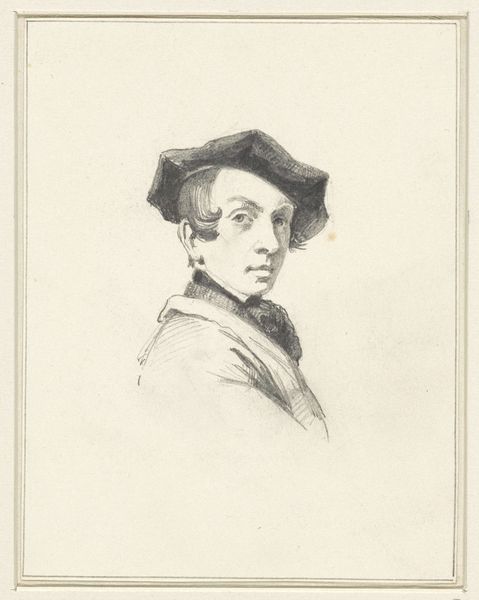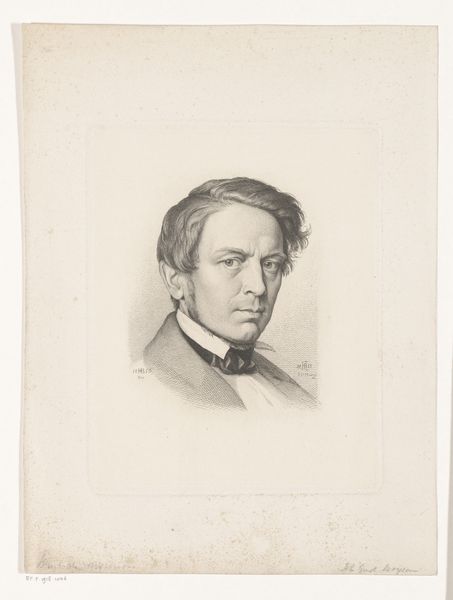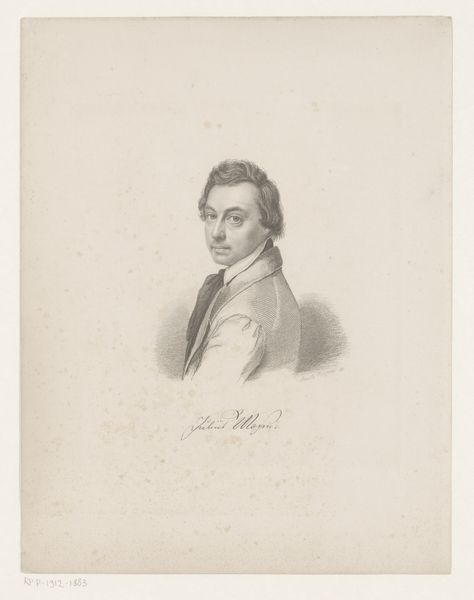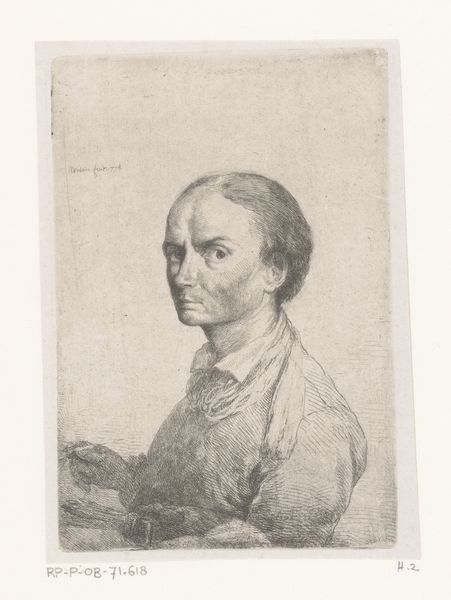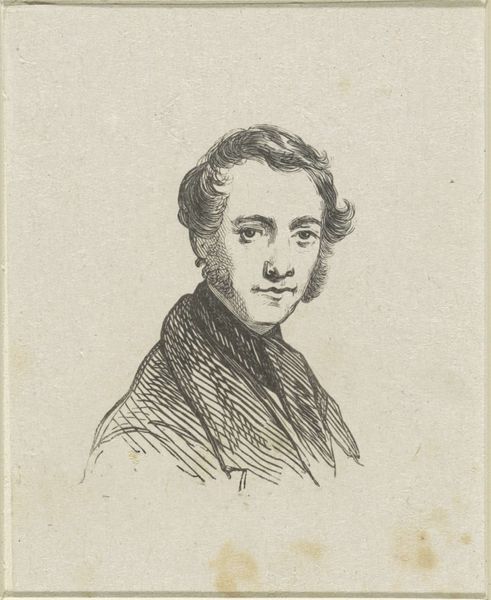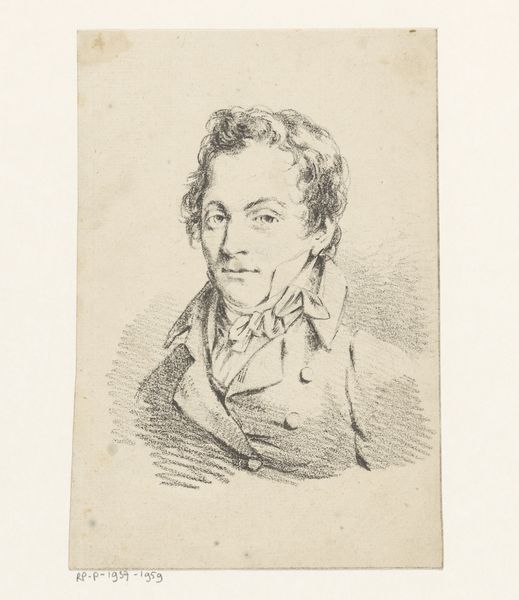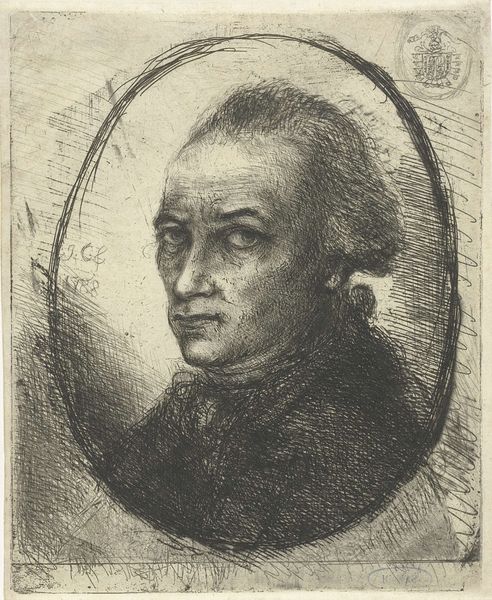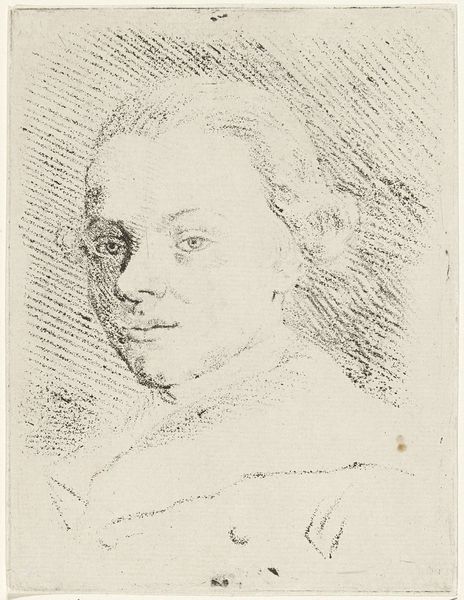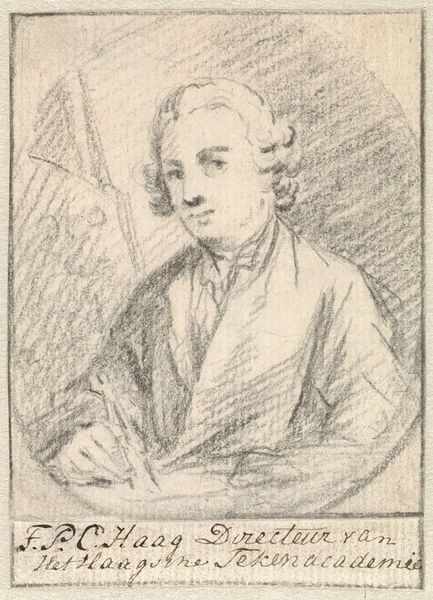
drawing, print, etching, dry-media, engraving
#
portrait
#
drawing
# print
#
etching
#
dry-media
#
pencil drawing
#
engraving
Dimensions: Image: 7 1/4 × 4 1/2 in. (18.4 × 11.4 cm) Sheet: 11 in. × 7 1/4 in. (27.9 × 18.4 cm) (clipped impression)
Copyright: Public Domain
This is Arthur Pond's self-portrait etching from 1734, now held at the Metropolitan Museum of Art. Pond, an English painter and printmaker, presents himself with a soft cap and open-necked shirt. Portraits have always been more than just likenesses; they embody social status and artistic identity. In 18th-century England, the art world was navigating new forms of patronage and public display. Artists like Pond were keen to establish their social standing and intellectual credentials. How do they fit within the hierarchy of the arts? Who are their patrons? By creating a self-portrait, Pond inserts himself into a lineage of artists who sought to define their own image and, by extension, their role in society. His choice of the etching technique is also noteworthy. Etching allowed for a certain informality and accessibility, distinguishing it from the more formal portraiture of the time. To understand Pond's artistic and social context, we might consult period writings on art theory, explore the records of art academies and societies, and examine the networks of patronage that shaped artistic careers. This helps us appreciate how artists negotiate their identities within the complex social structures of their time.
Comments
No comments
Be the first to comment and join the conversation on the ultimate creative platform.
